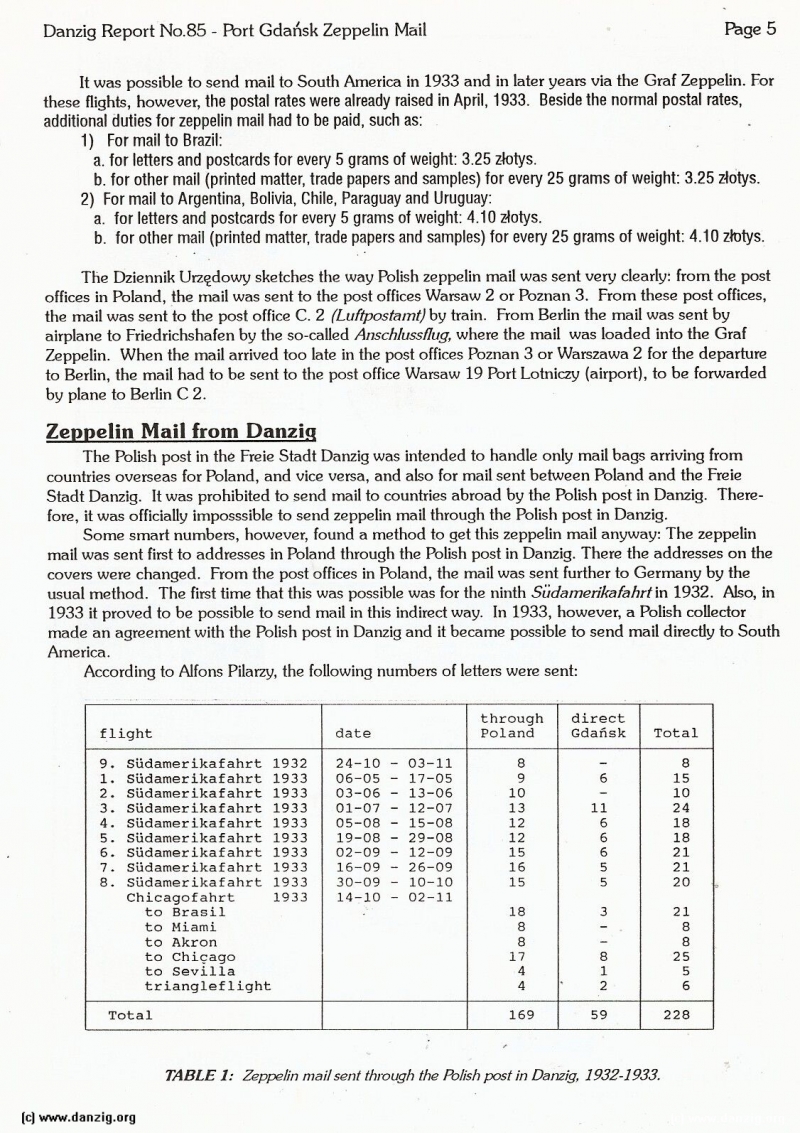
It was possible to send mail to South America in 1933 and in later years via the Graf Zeppelin. For these flights, however, the postal rates were already raised in April, 1933. Beside the normal postal rates, additional duties for zeppelin mail had to be paid, such as:
1) For mail to Brazil:
a. for letters and postcards for every 5 grams of weight: 3.25 zlotys.
b. for other mail (printed matter, trade papers and samples) for every 25 grams of weight: 3.25 zlotys.
2) For mail to Argentina, Bolivia, Chile, Paraguay and Uruguay:
a. for letters and postcards for every 5 grams of weight: 4.10 zlotys.
b. for other mail (printed matter, trade papers and samples) for every 25 grams of weight: 4.10 zlotys.
The Dziennik Urzçdowy sketches the way Polish zeppelin mail was sent very clearly: from the post offices in Poland, the mail was sent to the post offices Warsaw 2 or Poznan 3. From these post offices, the mail was sent to the post office C. 2 (Luftpostaint) by train. From Berlin the mail was sent by airplane to Friedrichshafen by the so-called i4nschlussflug, where the mail was loaded into the Graf Zeppelin. When the mail arrived too late in the post offices Poznan 3 or Warszawa 2 for the departure to Berlin, the mail had to be sent to the post office Warsaw 19 Port Lotniczy (airport), to be forwarded by plane to Berlin C 2.
Zeppelin Mail from Danzig
The Polish post in th Freie Stadt Danzig was intended to handle only mail bags arriving from countries overseas for Poland, and vice versa, and also for mail sent between Poland and the Freie Stadt Danzig. It was prohibited to send mail to countries abroad by the Polish post in Danzig. Theref ore, it was officially imposssible to send zeppelin mail through the Polish post in Danzig.
Some smart numbers, however, found a method to get this zeppelin mail anyway: The zeppelin mail was sent first to addresses in Poland through the Polish post in Danzig. There the addresses on the covers were changed. From the post offices in Poland, the mail was sent further to Germany by the usual method. The first time that this was possible was for the ninth Südamerikafahrt in 1932. Also, in 1933 it proved to be possible to send mail in this indirect way. In 1933, however, a Polish collector made an agreement with the Polish post in Danzig and it became possible to send mail directly to South America.
Danzig Report Vol. 1 - Nr. 85 - October - November - December - 1994, Page 5.
Hits: 3615
Added: 10/07/2015
Copyright: 2025 Danzig.org

